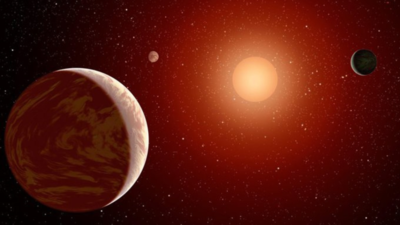
For years, astronomers have been puzzled by slow, repeating bursts of radio waves from space. Now, for the first time, they have tracked one of these signals to its source: a red dwarf starlikely paired with a white dwarfthe remains of a star that died long ago, according to the Conversation journal.
Mysterious signals
In 2022, astronomers discovered unusual radio pulses repeating every 18 minutes. The bright signals lasted three months before disappearing. These pulses were different from those of neutron stars, called pulsars, which usually spin quickly and send out radio waves every second or faster.
The slow pulses didn’t fit existing theories, leading scientists to consider new physics or unknown ways pulsars might emit radio waves. Since then, around ten similar signals, called “long-period radio transients,” have been found, but their sources remained unclear.
Slow radio pulses
Most of these signals were found in the crowded centre of the Milky Way, making it hard to identify their exact sources among thousands of stars.
To solve this, researchers used the Murchison Widefield Array in Western Australia, a telescope that scans large areas of the sky. Curtin University student Csanád Horváth analysed data from less crowded regions and found a new source: GLEAM-X J0704-37.
This object emits radio pulses that last a minute, like other transients, but at a slower rate—once every 2.9 hours, making it the slowest one discovered so far.
Red dwarf star
Follow-up observations with the MeerKAT telescope in South Africa confirmed the radio waves came from a red dwarf star. These stars are very common, making up 70% of the stars in the Milky Way, but they are too faint to see without a telescope.
Researchers noticed the pulses arrived slightly earlier or later in a repeating pattern, suggesting the red dwarf is paired with an unseen object in orbit. They believe this companion is likely a white dwarf.
Scientists think the red dwarf emits charged particles in a stellar wind, which interacts with the white dwarf’s magnetic field to create radio waves. This is similar to how the Sun’s wind creates auroras and radio waves on Earth.



















